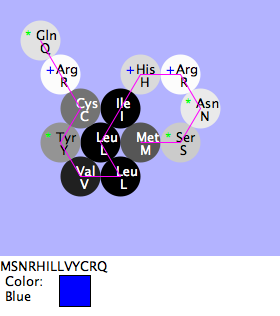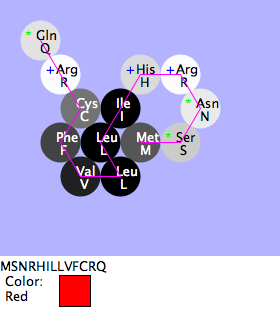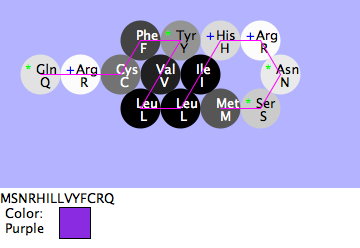Week 2 Individual Journal William P Fuchs
From OpenWetWare
Jump to navigationJump to search
Aipotu(II) BioChemistry Protein Pigments
Hypothesis
- Given that "red" phenylalanine and "blue" tryptophan amino acids are responsible for their respective pigments, their combination into the same protein sequence will fold into a true-expressing purple protein pigment.
Experiment
- Part 1
- The aipotu biochemistry tool was utilized to isolate certain target pigments and the pertinent findings were as follows:
- In the first run of the program initial discovery of the blue pigment came from the pigment combination in the "Green-2" flower color (Image A).
- As the next combination came about the red pigment discovery was located in the red flower pigment combination (Image B).
- phenylalanine and tryptophan pigements together produced a purple flower but not a purple protein.
- Tyrptophan and phenylalanine's structures were examined and both of the constituents functional groups where found to be non-polar amino acids.
- Part 2
- Once the pigment amino acids were isolated a new protein was constructed.
- The respectiveTyrptophan and phenylalanine amino acids were added in succession within the same amino acid sequence.
- The program was run with the new sequence and the suggested protein was folded, yielding the true purple pigment.
- Analysis of the successful protein was conducted.
Results
- The process described in the in the Experiment section exhibited two major findings: One was that a purple flower can be produced by combining the amino acid sequences responsible for the red and purple pigment. Although this produced a purple phenotype the pigment itself was a co dominant expression of alleles it was not a fundamentally purple pigment. However the true purple pigment desired was produced when the amino acids (red) phenylalanine and (blue) tryptophan were placed together within the same sequence. These two amino acids' R groups are aromatic and thus conjugated systems indicating their ability to absorb light and be responsible for the pigment color.
Conclusion
Based upon the findings in the Experiment section and detail in the Results section the hypothesis is supported that purple pigment is the combination of the aromatic red and blue amino acids.
Acknowledgements
This assignment and modeling experiment was conducted in tandem with Shivum Desai and Mia Huddleston and they assisted with the collaborative work aspect and helped model the layout of this individual journal entry.
References
The images and experiment software were provided by:
Aipotu(II) Biochemistry tool [Computer Software]. (2012).
Retrieved from http://aipotu.umb.edu
The instructions for the assignment were found in the Assignment 2 Folder and were utilized for the guidelines of this page.
Reference subsection (Shared Journal)
- Eaton, C.D., Callendar, H.L., Dahlquist, K.D., LaMar, M.D., Ledder, G., Schugart, R.C. (2016) A “Rule of Five” Framework for Models and Modeling to Unify Mathematicians and Biologists and Improve Student Learning, submitted on 20 June 2016 to the journal PRIMUS: Problems, Resources, and Issues in Mathematics Undergraduate Studies for an upcoming special issue on interdisciplinary conversations.
Useful Links
Individual Journals
- WPF Week 2
- WPF Week 3
- WPF Week 4
- WPF Week 5
- WPF Week 6
- WPF Week 7
- WPF Week 8
- WPF Week 9
- WPF Week 10
- WPF Week 11
- WPF Week 12
- WPF Week 14
- WPF Week 15
Class Journals
- Week 1
- Week 2
- Week 3
- Week 4
- Week 5
- Week 6
- Week 7
- Week 8
- Week 9
- Week 10
- Week 11
- Week 12
- Week 13
- Week 14
- Week 15
Assignments
Useful Links
- Bio Class Page
- BIOL368/F16:People
- Will Fuchs
- Link to LMU: http://www.lmu.edu/


